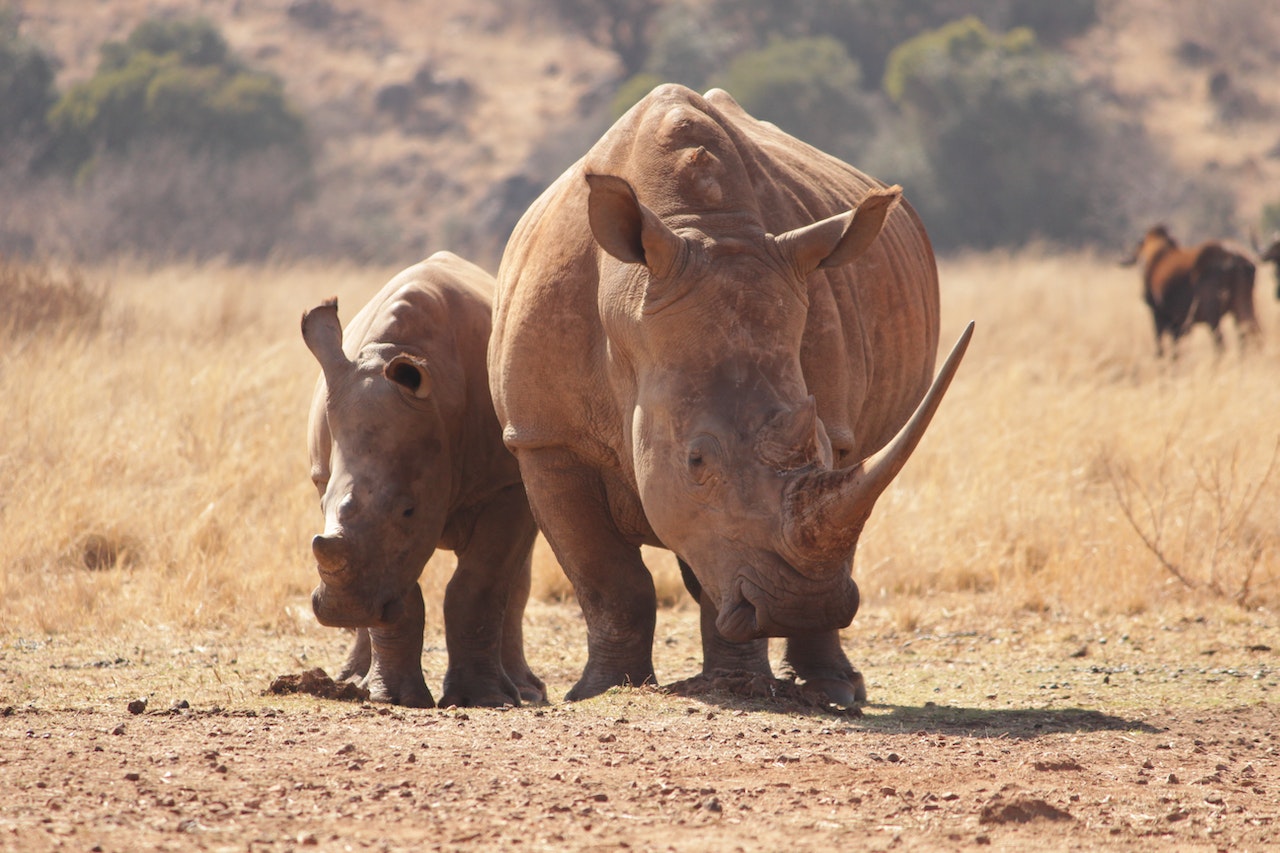Environment & Nature
Farmed rhinos will soon ‘rewild’ the African savanna

African Parks plans to release the total Platinum Rhino ranch population, currently 2,000 rhino (amounting to roughly 15% of the global white rhino population), into the wild across Africa over the next ten years. (Pexels Photo)
With all the terrible news on climate change, it’s easy to lose track of what’s happening with particular species. So, in case you missed it, a new report has bad news for Earth’s five surviving species of rhino.
Poaching for rhino horn continues to threaten populations of rhino in Africa, and the two smallest and most endangered species of rhino – the Sumatran rhino and the Javan rhino – tread ever closer to being unable to sustain themselves in the wild, due to habitat loss and low population sizes.
While we should never become desensitised to wildlife crime, environmental destruction and species extinctions, there is also some remarkable news. Conservation charity African Parks recently bought the largest private collection of rhino in the world: the Platinum Rhino farm at Klerksdorp, near Johannesburg in South Africa, previously owned by South African businessman John Hume.
African Parks plans to release the total Platinum Rhino ranch population, currently 2,000 rhino (amounting to roughly 15% of the global white rhino population), into the wild across Africa over the next ten years. That is good news. As an ecologist, I don’t see the point in conserving a wild species to keep in captivity. Wildlife belongs in the wild.
Hume’s plan to buy up and breed farmed rhino might have allowed him to sell horns for a profit once legal international trade was permitted. But that didn’t happen.
The international ban on trading rhino horn, enacted by the Convention on International Trade in Endangered Species (CITES), has held firm, despite lobbying by Hume and others. These critics were joined by some conservationists who believe that the best or only way to save rhino is by legalising the trade in their horns. The logic here is that legalisation would flood the market with legal rhino horn, devaluing illegal horns and slashing the profits of poachers and wildlife traffickers. With that, the incentive to kill rhino would shrink.
Hume continued to expand his private rhino farm and used his increasing rhino population as leverage in his calls for legalisation. But with the ban on international trade intact, Hume seems to have ran out of patience. The Platinum Rhino collection was put up for online auction in April 2023 at a starting price of US$10 million (£8.1 million). It failed to attract bids.
That may reflect the problem that rhino face: if people can’t make money out of rhino, nobody is going to want to pay to look after them. But it also highlights a problem driven by farming wildlife for profit, otherwise known as game ranching: if the profits fall, what happens to the animals?
Into the wild
After its failure to sell at auction, the largest private collection of rhino in the world was bought by African Parks. But the charity’s plan to rewild these rhino will not be easy.
A number of years ago I was involved in what was, at the time, the largest private translocation of rhino. The team I worked with moved tens of rhino; the African Parks mission is a lot bigger.
African Parks manages an area of 20 million hectares spread across 22 national parks and protected areas over 12 countries. They will contain suitable savanna grassland for releasing the rhino and the charity has already reintroduced rhino to parks in Rwanda, Democratic Republic of Congo and Malawi.
Conservation scientists recently said there is “a clear need to scale up rewilding initiatives”. It doesn’t get much bigger than reintroducing thousands of rhino across Africa. Rhino can play a key role in restoring the ecosystems into which they are placed, greatly influencing a network of species around them and healing ecological wounds incurred via people.
This is the nature of rewilding: restoring the linkages that make up ecosystems. Restored megafauna (large herbivorous mammals, in this case) can also help address climate change by enhancing how much habitats naturally store carbon, through dispersing seeds and enriching the soil.
Restoring megafauna is tricky, and in a recent scientific paper conservationists argued for changes in policy to support it. They suggest “a transition from farming to wildlife ranching, combined with ambitious breeding programs for keystone megafauna”. The Platinum Rhino population may well turn out to be a flagship in showing that such an approach is achievable.
Where will the rhino go? Will they be released into areas where rhino are locally extinct, or supplement existing populations? Can they be used to fulfil the role vacated by the functionally extinct northern white rhino (subspecies)?
Time will tell. In the meantime, the farmed rhino need to be prepared to cope with the stress of translocation and release, and for a wild life. They need to be toughened, to find and process food from the natural environments in which they will be placed. They will need to tolerate the challenges of their new environments, such as disease, parasites and predators.
The most dangerous predator of rhino remains the human species. The conundrum of how to stop or even simply reduce the loss of free-living rhino to poachers remains. The soon-to-be-released rhino will have to deal with this – with traditional anti-poaching conservation support. Alongside that, demand reduction efforts must continue in order to bring down the desire for rhino horn.

Don’t have time to read about climate change as much as you’d like?
Get a weekly roundup in your inbox instead. Every Wednesday, The Conversation’s environment editor writes Imagine, a short email that goes a little deeper into just one climate issue. Join the 20,000+ readers who’ve subscribed so far.![]()
Jason Gilchrist, Lecturer in the School of Applied Sciences, Edinburgh Napier University
This article is republished from The Conversation under a Creative Commons license. Read the original article.





















